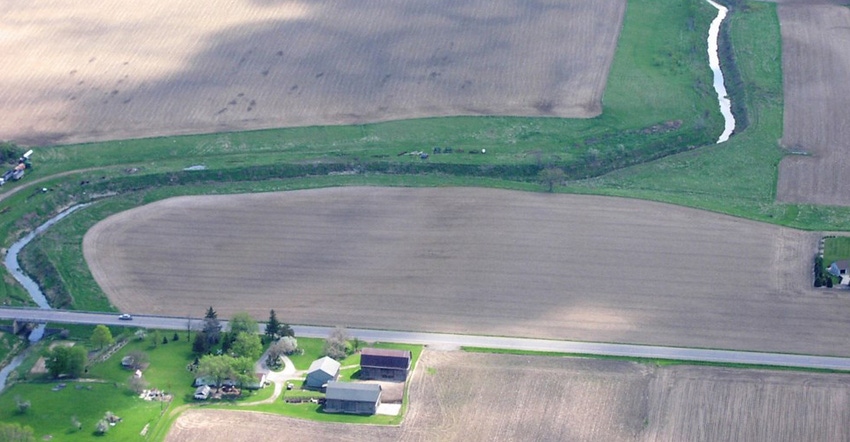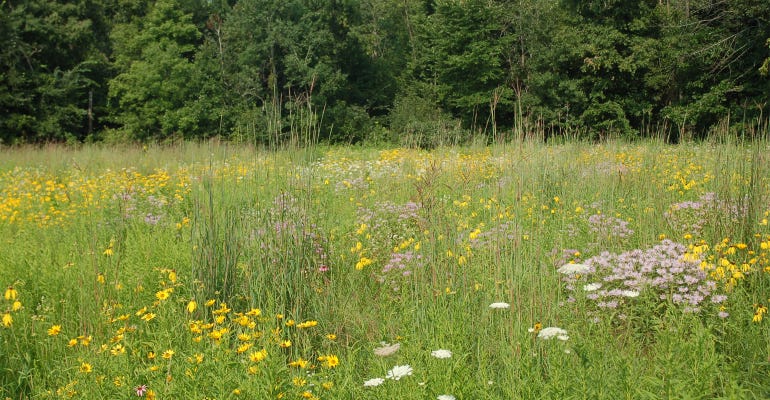
The 2018 Farm Bill provided for expansion of USDA’s Conservation Reserve Program from 22 million to 27 million accepted acres to be enrolled by 2023. Landowners and operators have responded.
The national acceptance rate of enrolled land during the most recent general sign-up that ended Feb. 28 averaged 89% — the highest acceptance rate in the program’s history. In total, 3.4 million acres were accepted of the 3.8 million acres offered.
General CRP sign-ups are competitive. Offers for CRP contracts during general enrollment are ranked according to the Environmental Benefits Index. FSA uses the following EBI factors to assess the environmental benefits for the land offered:
wildlife habitat benefits resulting from covers on contract acres
water quality benefits from reduced erosion, runoff and leaching
on-farm benefits from reduced erosion
benefits that will likely endure beyond the contract period
air quality benefits from reduced wind erosion
cost
CRP is a federally funded voluntary program that contracts with agricultural producers so that environmentally sensitive agricultural land is not farmed, but instead devoted to conservation benefits.
CRP participants establish long-term, resource-conserving plant species, such as approved grasses or trees (known as “covers”) to control soil erosion, improve water quality and develop wildlife habitat. In return, the USDA Farm Service Agency provides participants with rental payments and cost-share assistance.
For many conservation-minded farm owners, CRP can provide much-needed financial relief and serve as an environmental lifeline, says Dale Allen, Michigan FSA conservation chief.

POLLINATOR HABITAT: This pollinator habitat cover was installed on a farm in Kent County, Mich.

For Michigan, the acceptance rate during that enrollment period was 92%, as 9,182 acres of the 9,932 offered acres were accepted by 431 landowners. During the previous enrollment period in 2016, the acceptance rate was only 18% (13,539 acres offered, 923 acres accepted), while the national average was 22%.
It’s important to note that not all of this year’s contracts are new enrollments. In fact, about 65% were re-enrollments for 10- to 15-year contracts, Allen says.
In total, according to the latest 2019 report, about 116,000 Michigan acres are enrolled in CRP. Despite a strong showing this past enrollment, CRP acres have declined from a high of 310,000 acres in 2002.
Allen says this is a reflection more of the program evolving from whole field enrollment to more focus on targeted conservation practices such as filter strips, as opposed to interest in the program.
Enrollment still available
While the general sign-up is over for this year, the newest farm bill calls for a general sign-up to be offered annually, so it is anticipated that those interested will see a sign-up period again early next year.
But you don’t even have to wait that long. There also is a continuous sign-up where environmentally sensitive land devoted to certain conservation practices can be enrolled in CRP at any time. Offers are automatically accepted provided the land and producer meet certain eligibility requirements, and the enrollment levels do not exceed the statutory cap.
The process
Enrollment in any CRP program starts by contacting one of the USDA service centers throughout Michigan. While FSA has administered CRP since 1985, “FSA has a lot of help from the Natural Resource Conservation Service, local conservation districts and many other partner organizations that understand the value of the program,” says Allen, who recognizes their contribution of technical expertise in carrying out conservation plans and implementation.
“First, we determine if land is eligible and discuss the financials and benefits of the program,” he says. “If a landowner decides the program meets their objectives, an offer is submitted at the local level. A USDA employee walks the property to make sure the practice they are wishing to pursue is needed and feasible, and then they work through the contracting process and ultimately implement the conservation cover on the landscape."
Program expands
Expanding the original CRP, FSA partnered in 2000 with the state of Michigan to establish the Conservation Reserve Enhancement Program, which is focused on key areas, including Saginaw Bay, the River Raisin watershed in southeastern Michigan, and Lake Macatawa, which is along Lake Michigan in Ottawa County.
“Those areas received extra financial incentives from the state of Michigan to encourage folks to voluntarily enroll eligible acreage into certain CRP practices,” Allen says, while noting it is all voluntary. “The idea is to try and make it as financially and environmentally attractive as we can.”
Initially, CREP had great success, he notes, while pointing out that Michigan at one time had about 5,000 acres offered on a monthly basis.
“In 2016, the state of Michigan funding source ran out and enrolling new acreage under CREP has been suspended since,” Allen says. “However, we were encouraged that Gov. [Gretchen] Whitmer requested to allocate a little over $10 million to resurrect our CREP, but I’m not sure where that stands,” Allen says. “We do see the value of that partnership and hope that state funds are allocated to allow for it to continue.”
Wildlife focused
In 2007, the CRP launched another program with the state called State Acres for Wildlife Habitat Enhancement (SAFE).
In Michigan, three focus efforts were developed through partnerships with Pheasants Forever, the Michigan Department of Natural Resources, the Michigan Department of Agriculture and Ducks Unlimited.
“While this partnership did not bring additional financial incentives with the partners, it did boost outreach and technical assistance, which led to more adoption of conservation practices,” Allen says.

WETLAND RESTORATION: A 260-acre CREP wetland restoration filters water entering the Saginaw Bay. Covers were established under the Michigan CREP agreement in 2002 and 2005.

Under SAFE, Michigan offered one of the first pollinator-focused programs in the country in 2008, which is now a national effort, Allen says.
“In 2008, we started focusing on two tiers of counties along Lake Michigan, where most of the state’s fruit and vegetable growers operate,” he says. “We knew landowners and operators would certainly understand the value of pollination and would be early adopters to install habitat.”
In 2018, SAFE included a 41-county focused effort on pheasants and monarchs. Of the 17,000 acres offered the first year, a little more than 10,000 acres ended in a contract, Allen says.
“There’s a lot of interest in the monarchs, as there’s concern if they become listed [endangered], it could potentially affect farm management practices,” Allen says.
Landowners can find out more about the USDA Agricultural Conservation Easement Program by contacting their county Farm Service Agency office at fsa.usda.gov/mi, and then select the county offices link to locate the county’s FSA contact information.
CRP successes
Marking its 35th anniversary in 2020, CRP has:
prevented more than 9 billion tons of soil from eroding, enough soil to fill 600 million dump trucks
reduced nitrogen and phosphorous runoff relative to annually tilled cropland by 95% and 85%, respectively
sequestered an annual average of 49 million tons of greenhouse gases, equal to taking 9 million cars off the road
created more than 3 million acres of restored wetlands, while protecting more than 175,000 stream miles with riparian forest and grass buffers, enough to go around the world 7 times
benefited bees and other pollinators and increased populations of ducks, pheasants, turkey, bobwhite quail, prairie chickens, grasshopper sparrows and many other birds
About the Author(s)
You May Also Like






